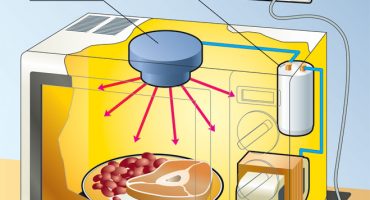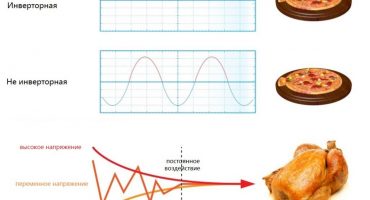With the massive use of microwave ovens in microwave ovens, a large number of violations in their work, breakdowns occur. Many people who have encountered this are interested in how to check the microwave capacitor on their own. Here you can find the answer to this question.
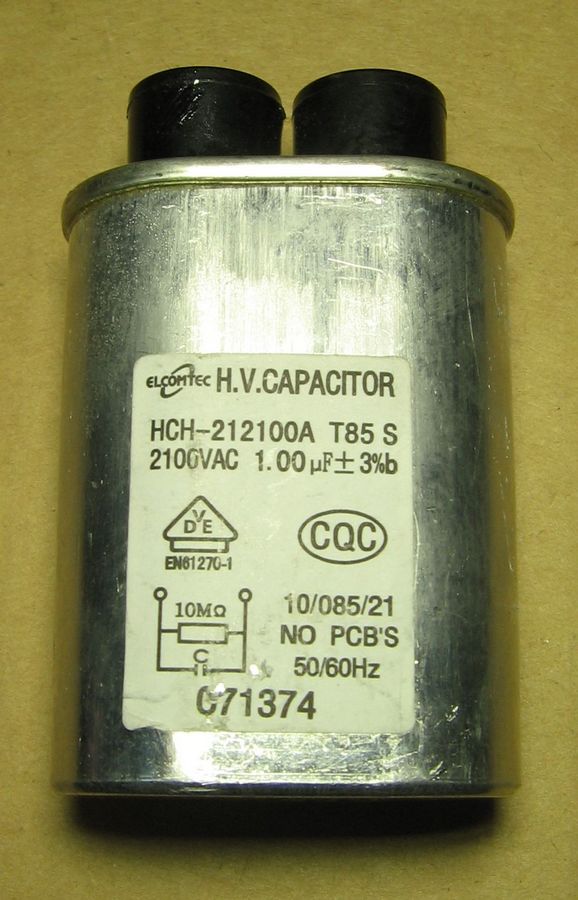
Microwave condenser
Device principle
A capacitor is a device that has the ability to store a certain charge of electricity. It consists of two metal plates mounted in parallel, between which there is a dielectric. The increase in the area of the plates increases the accumulated charge in the device.
Capacitors come in 2 types: polar and non-polar. All polar devices are electrolytic. Their capacitance is from 0.1 ÷ 100000 μF.
When checking the polar device, it is important to observe the polarity when the positive terminal is connected to the positive terminal and the negative terminal to the negative terminal.
High-voltage are precisely polar capacitors, for non-polar ones - low capacitance.
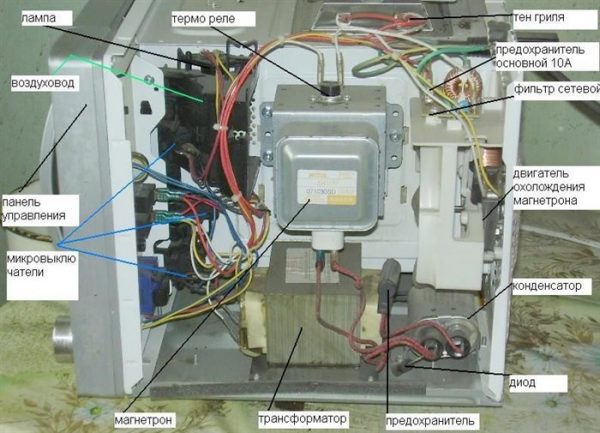
Microwave with capacitor location
The microwave magnetron’s power circuit includes a diode, transformer, and capacitor. Through them, up to 2, 3 kilovolts goes to the cathode.
A capacitor is a large part weighing up to 100 g. It is connected to the output of the diode, the second on the case. A cylinder is also located near the block. Specifically, this cylinder is a high voltage fuse. He must not allow the magnetron to overheat.
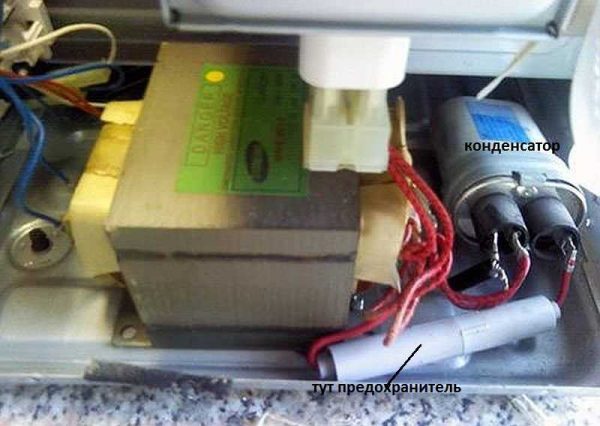
Capacitor Location
How to discharge a capacitor in the microwave
It is possible to discharge it in the following ways:
Having disconnected from the mains, the capacitor is discharged, carefully closing its terminals with a screwdriver. A good discharge indicates its good condition. This method of discharge is the most common, although some consider it dangerous, capable of harming and destroying the device.

Capacitor discharge with screwdrivers
The high voltage capacitor has an integrated resistor. It works to discharge parts. The device is located under the highest voltage (2 kV), and therefore there is a need for its discharge mainly on the housing. It is better to discharge parts with a capacitance of more than 100 μF and voltage from 63V through a resistor of 5–20 kilo ohms and 1–2 W. Why do the ends of the resistor combine with the terminals of the device for a certain number of seconds to remove the charge. This is necessary to prevent the occurrence of a strong spark. Therefore, you need to worry about personal safety.
How to check the high voltage microwave capacitor
The high-voltage capacitor is checked by connecting it with a 15 W X 220 V lamp. Next, the combined capacitor and bulb from the outlet are turned off. When the part is in working condition, the lamp will glow 2 times less than usual. If there is a malfunction, the light shines brightly or does not light at all.

Check with a bulb
The microwave capacitor has a capacity of 1.07 mF, 2200 V, so it is quite simple to test it with the help of a multimeter:
1. It is necessary to connect a multimeter so as to measure the resistance, namely the greatest resistance. On the device, make up to 2000k.
2. Then it is necessary to turn on the uncharged device to the terminals of the multimeter without touching them. When operating, the readings will become 10 kOhm, turning into infinity (on monitor 1).
3. Then you need to change the terminals.
4.When when you turn it on to the device on the monitor of the multimeter, nothing changes, this means that the device in the cliff, when it is zero, means that there is a breakdown in it. If the device shows a constant resistance, albeit of a small value, then there is a leak in the device. It must be changed.
Multimeter check
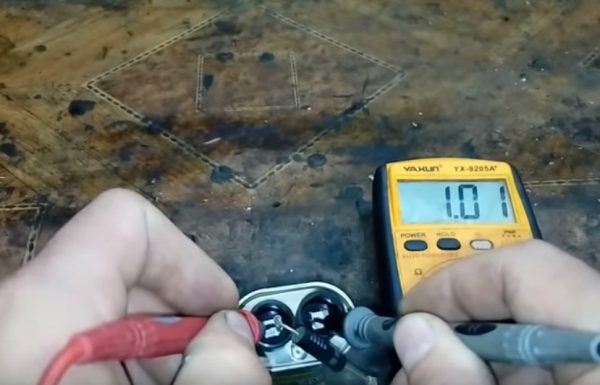
Multimeter check
These tests are done at low voltage. Often faulty devices do not show disturbances at low voltage. Therefore, for testing, you need to use either a megaohmmeter with a voltage equal to the voltage of the capacitor, or an external high voltage source will be needed.
It is impossible to test it with a multimeter in an elementary way. It will only demonstrate that there is no breakage and short circuit. To do this, it is necessary to connect it to the part in the ohmmeter mode - in good condition it will demonstrate a low resistance, which will grow at infinity in a few seconds.
A faulty capacitor has an electrolyte leak. Making capacity determination a special device is not difficult. It is necessary to connect it, set it to a higher value, and touch the terminals to the terminals. Check with regulatory. When the differences are small (± 15%), the part is in good working order, but when they are absent or significantly lower than normal, then it has become unusable.
To test the part with an ohmmeter:
1. It is necessary to remove the outer cover and terminals.
2. Discharge it.
3. Switch the multimeter to test the resistance of 2000 kilo ohms.
4. Examine the terminals for mechanical defects. Bad contact will adversely affect the quality of the measurement.
5. Connect the terminals to the ends of the device and watch for numerical measurements. When the numbers begin to change like this: 1 ... 10 ... 102.1, means that the part is in working condition. When the values do not change or zero appears, then the device is inoperative.
6. For another test, the device must be discharged and confirmed again.
Check with an ohmmeter

Check with an ohmmeter
It is also possible to test the capacitor to detect abnormalities with a tester. To do this, you need to configure the measurements in kilo Ohms, and watch the test. When the terminals touch, the resistance should drop to almost zero, and in a few seconds grow up to the indication on the scoreboard 1. This process will be most slow when you turn on measurements for 10s and hundreds of kilo-ohms.

Capacitor Testing Work
Micron through passage capacitors in the microwave are also tested by a tester. It is necessary to touch the conclusions of the device output of the magnetron and its body. When the scoreboard is 1, the capacitors are operational. When resistance readings appear, it means that one of them is broken or in a leak. They need to be replaced with new parts.
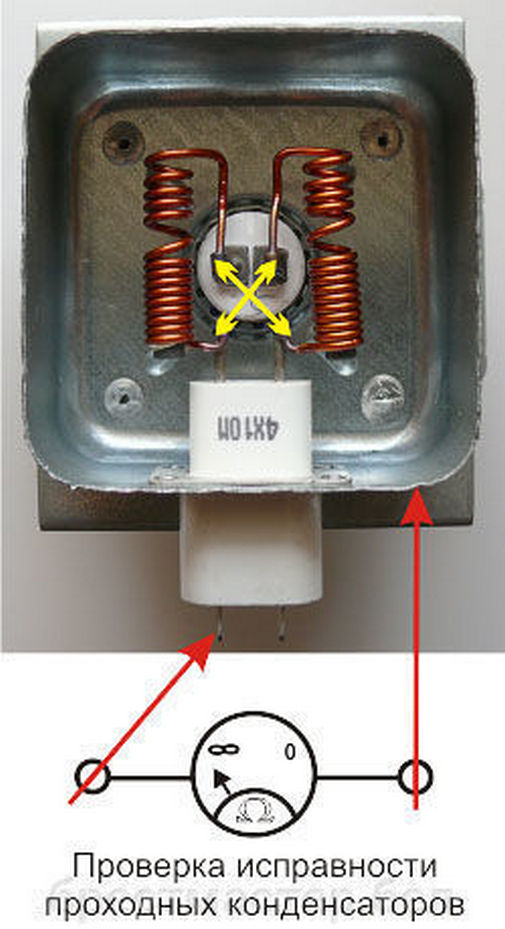
Checking the health of feed-through capacitors
One of the reasons for the malfunction of the capacitor is the loss of part of the capacitance. It becomes different, not like on the case.
It is difficult to find this violation with the support of an ohmmeter. We need a sensor, which is not in every multimeter. A break in the part does not occur so often with mechanical stress. Much more often, violations occur due to breakdown and loss of capacity.
A microwave does not heat the microwave due to the fact that there is a leak in the part that is not detected by an ordinary ohmmeter. Therefore, it is necessary to purposefully test the part with the support of a megger using high voltage.
The test steps will be as follows:
- It is necessary to set the largest measurement limit in ohmmeter mode.
- Touch the probes of the measuring device to the conclusions of the part.
- When “1” is displayed on the board, it shows us that the resistance of more than 2 megaohms, therefore, is in working condition, in another embodiment, the multimeter will demonstrate a lower value, which means that the part is inoperative and has become unusable.
Before you start repairing all electrical devices, you need to make sure that there is no power.
After checking the parts, it is necessary to take measures to replace those that are inoperative with new, more advanced ones.

Capacitor discharge to housing


